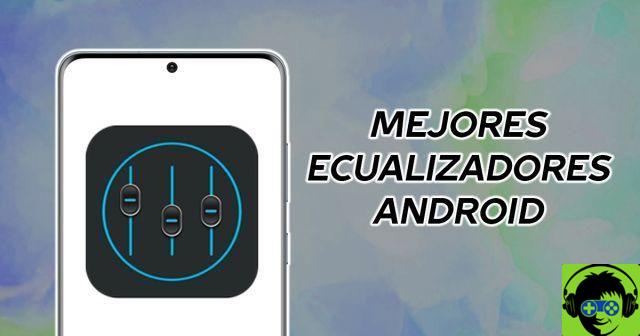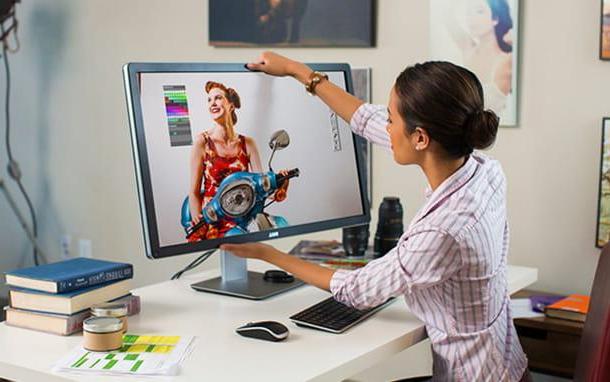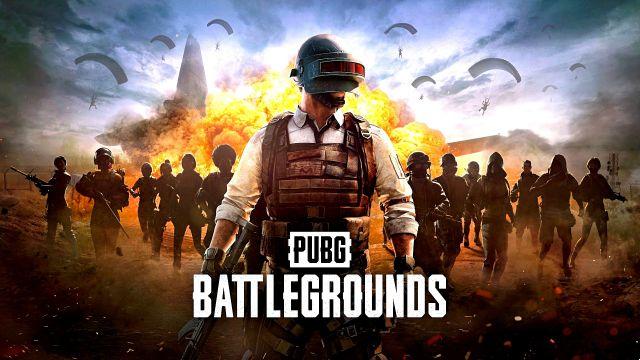You've recently decided to buy a new camera, but you just don't want to spend a fortune on this product. What would be right for you is a camera with the right value for money, able to meet your needs as a non-professional and that does not cost too much. In short, you are looking for best budget cameras currently available on the market, but your first online searches did not bear much fruit, also because you realized the existence of many types of cameras and you do not know which one can do exactly for you.
Don't worry, I'll tell you right away that feeling a little disoriented between compact, Mirrorless, Bridge and Reflex models is completely normal, especially if you are only recently approaching photography and do not yet know how to distinguish the models on the basis of their technical characteristics. On the other hand, it is precisely for these reasons that I decided to write this guide and try to give you a hand in choosing the most suitable product for you.
Precisely in this tutorial I will have the pleasure of recommending the best economic models of cameras that you can buy, first passing by the description of the various types and fundamental characteristics to be evaluated before each purchase. All with an eye always on the limited budget (which, let's understand immediately, as a minimum threshold also changes a lot from model to model). Having said that, without further ado I wish you happy reading and above all, happy shopping!
Types of cameras

To be able to choose the best budget camera corresponding to your needs, the first thing to do is to be clear about the main differences that exist between the different models most popular today.
Di camera types there are many and, contrary to what one might initially think, one type is not necessarily superior to another in absolute terms. It is certainly possible to have a personal preference and this depends above all on the destination and the circumstances of use. So here is a brief description of the types of cameras featured in this guide.
Compatte point-and-shoot

Also called "point and shoot", just to emphasize their ease of use and the immediacy with which you can take pictures (even of good quality). They are especially preferred by those looking for an easy and reliable tool in order to immortalize particular occasions with extreme ease (trips, parties and ceremonies for example).
Their optics are fixed and their weight is low, as is the price. In most economic models, the fotocamera compatte point-and-shoot they do not have many parameters and shooting effects, a limitation overcome by some models which, however, also suffer from what is the Achilles heel of the category: poor lighting. When shooting in low light conditions (evenings and in artificial light outdoors) these cameras do not handle movement well, so the photo is easily blurred and with noise. However, recently many improvements have also been made in this regard.
Among the cameras of this type we can also include the instant cameras which, similarly to what was done by the old Polaroids (now available in technologically updated versions), allow you to obtain instant shots of what is immortalized, through films to be purchased separately.
You can learn more about features and discover the best models of compact cameras in my dedicated guide, while in this article I will give precedence to the more affordable models.
Pocket Super Zoom

With the Super Zoom pocket cameras we remain in the theme of compact fixed optics (non-interchangeable zoom), but with a significant step forward as regards the zoom capacity of the lens. At the cost of a heavier weight than the compact point-and-shoot, the Super Zooms equip optical mechanics even higher than 20 × in combination with generally more advanced controls and shooting performance capable of adapting to more situations.
These are cameras that in terms of features and functions meet above all the needs of non-expert users looking for something more than the classic point-and-shoot camera.
Bridge cameras
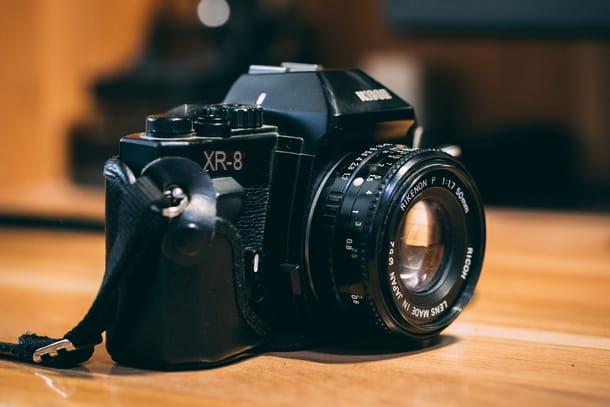
The very name "bridge" indicates the willingness of manufacturers to introduce this type of camera to the market as a "bridge" (precisely) between the compact cameras, preferred by occasional users, to the SLRs most loved by photo professionals. .
Among the features of the Bridge cameras the low weight (compared to the Reflex), the long-range zoom like the Super Zoom, but at the same time boast a greater number of advanced controls and a focal compartment (normal, wide angle and telephoto) more competitive and close to the Reflex (and of the Mirrorless, of which I will talk to you very shortly). Limitations of these cameras remain the shots in low light conditions and in motion, while they are an excellent compromise for those who want the typical advantages of a DSLR including the ability to cover different focal lengths, but without the clutter to carry many different lenses. . If you want to discover the absolute best and don't spare any expense, here are my tips on it.
mirrorless

Le Mirrorless cameras they are placed on the market as an alternative to DSLRs in terms of versatility of use and quality of the shots, aiming above all at the fact of remaining compact cameras of smaller dimensions.
The optics are in fact interchangeable, even if the mirror and optical viewfinder are absent, while the quality of the photos is very similar to the SLR. Despite this, it is precisely their compactness that discourages some professionals as they consider them not very ergonomic and small compared to the control and adjustment buttons.
The Mirrorless have proved to be ideal for those looking for quality while allowing themselves to travel with little space. I told you about the absolute best in this buying guide.
reflex

Le Reflex cameras (or dSLR, i.e. single-lens digital Relfex) remain the preferred choice for photo professionals and photography enthusiasts. The reason is easily explained by the maximum control of the shooting parameters that the SLR cameras offer, as well as by the predisposition to mount a large variety of lenses with the possibility of using the optical viewfinder to view the scenes captured in real time by the sensor.
Added to this are features that have brought even shooting beginners closer to this type of cameras, namely different automatic functions and shooting modes, as well as touch-screen interfaces (in the most recent models). The shot immortalized by a SLR is the result of the combination of a series of mirrors that reflect the light towards the viewfinder passing through the lens.
Clearly, these cameras also have negative sides, including certainly the weight and size compared to the compact, as well as the more sustained price. In this guide, I focus on the cheapest models of this type of camera, while if you are looking to have a more complete picture of choosing an all-round DSLR, here's what to know about how to choose one.
Technical features

After talking to you about the main differences between the various types of cameras, I think it is also important to have a clearer idea of the technical characteristics. In fact, regardless of the type, each camera must be evaluated considering its own technical features. Here are the most relevant ones to take into consideration.
- Megapixels - is perhaps the best known parameter when it comes to cameras, on the other hand it could not be said to be of little importance since it refers to the number of pixels that make up the captured images. Yet, contrary to what is advertised, it is not a parameter that alone can really say everything about the overall quality of the photos. More precisely, Megapixels are the multiplication of the pixels of the horizontal side with those of the vertical side of the captured image (double Megapixels does not mean twice as large photos). The quality of the photo, however, is given above all by other parameters such as ISO and optics (the quality of the objective lens).
- ISO - as I anticipated, the level of sensitivity to light (ie the ISO), is one of the most useful parameters to estimate the overall quality of the cameras. ISO is an adjustable value in many models, so the higher the maximum supported, the more capable the camera is to take crisp, clear photos even in low light. The sensitivity depends from camera to camera, so to know what is the "critical point" (ie the ISO value beyond which artifacts called "noise" are generated) of a specific model, it is best to do a search on the Internet
- Sensor format - a general rule is to consider the size of the sensor directly proportional to a higher quality of the photos taken. In fact, smaller sensors are usually intended for compact cameras, especially point and shoot, while larger sensors are mounted in Reflex and Mirrorless cameras. The technical characteristic of the sensors is the measurement, those called Full Frame with measures 24 x 36 mm, equivalent to the 35mm film format (conversion ratio 1: 1), followed by the APS-C sensors with measures 23 x 15 with a conversion ratio 1,5 , 1: 1.6 or 1: 17 (variable depending on the cameras), finally the Quattro thirds system which measures 13 x 2 with a 1: XNUMX conversion ratio (much used in Mirrorless).
- Focal and zoom - another very important parameter to take into consideration when evaluating the technical characteristics of the cameras is the quality of the lenses. Zoom and focal length are parameters of the lenses and a large part of the quality of the shots depends on them. The focal length, i.e. the distance between the sensor surface and the center of the objective lens with focus at infinity, can be normal (50 mm), wide angle (with a lower focal length than the normal lens ) to photograph large areas and telephoto (with a greater focal length than the normal lens to magnify objects than human vision). Zooms, on the other hand, are combinations of lenses with different focal lengths that allow you to frame distant objects without moving. Given the vastness of the topic, if you want to know more I suggest reading my article on choosing which lens to buy.
- Lens aperture - a parameter concerning the maximum aperture of a lens. It is commonly expressed in F-stops (e.g. f / 1,4 or f / 5,6), a measurement that refers to the aperture: the lower the number, the greater the ability to capture clear images even in low light. .
- Number of photos per second and focusing speed - it is a very important parameter for those who want to take pictures in motion, such as those of sports competitions. By being able to take photos in rapid succession (such as the number of photos per second), you are more likely not to miss the “moment” and immortalize it in an image. Equally important is the focusing speed, the faster the camera, the higher the overall quality of the shot taken in motion.
- Video recording - this feature is now widespread among all camera models, including DSLRs and compact cameras. Although cameras are not born to capture video, they have proved to be quite versatile in this too. Clearly here the parameters to consider are the maximum resolution of the movies (HD, Full HD, 4K etc.) and the FPS (frames per second).
- Processor - with the transition to the digital format of cameras, the need arose to also equip them with a processor to entrust them with the arduous task of converting the light stored by the sensor into a digital image. The power and quality of the processors affects the shooting speed, but also the color fidelity and the management of all the photo parameters set.
- Wi-Fi, NFC, Bluetooth e GPS - functions that are certainly not essential, but they can come in handy in several cases. For example, cameras with integrated Wi-Fi and NFC allow you to share your shots much more easily with other devices such as smartphones, tablets and Wi-Fi printers. Bluetooth and GPS technology can also be an alternative to Wi-Fi, useful for communicating with other devices. The GPS instead serves especially to indicate the location where a photo was taken, stored by the camera in data called EXIF.
Which cheap cameras to buy
After talking to you about the various types of cameras and the main technical characteristics to consider before making the purchase, I can now move on to the real advice on best budget cameras currently available for purchase. I preferred to categorize my suggestions respectively by camera model, so that you can choose according to your needs.
Best inexpensive point-and-shoot compacts
The first category I'm talking about is that of the compact tip and snap, the category to be favored when it comes to keeping the price low (certainly at the sacrifice of many settings), while meeting different needs such as portability and original functions. An example? The ability to “develop” your photos into instant models (such as the iconic Polaroid models) immediately after shooting.
Polaroid Now

With little doubt it is the point and shoot par excellence, especially in the economic category. The branding behind this model is a guarantee in itself, so this camera is a must-consider if you are looking for convenience and automatic shots with vivid and sharp colors. The focus is automatic, there is the double exposure function (for the union of different frames in a single image), in addition of course to the self-timer and the flash. Like the more classic Polaroid compact cameras, this camera can print photos directly. The maximum focal distance is 102.35 mm and is compatible with i-type and 600 films. Polaroid Now compared to the competition are certainly the value for money, the extended battery life and the original aesthetics with the possibility of choosing the color. The dimensions are 11.2 x 9.4 x 15 cm. It should be emphasized that this is a camera that uses film, so it will be necessary to buy them once they are exhausted (prices vary according to quality and quantity).
Vedi offers your AmazonPolaroid Snap Touch 2.0

Another excellent economic point-and-shoot camera is also from the well-known Polaroid brand: the Snap Touch 2.0. Compared to the Polaroid Now it has a more modern look and in a more compact size, in addition to being digital and with a touch screen. The sensor is 13 Megapixel, the built-in flash and the capacitive touch display is 3.5 inches large. Another feature that makes it modern and versatile and easy to use is the ability to connect via Bluetooth with the Android and iOS application in order to transfer, edit and print photos (also present in the smartphone). Exactly, this digital camera also allows you to print snapshots and is available in different colors.
Nikon Coolpix W150

This compact point and shoot produced by Nikon is the ideal solution for those looking for a durable, practical and capable of quality shots in the most common situations. To differentiate it from the competitors is the water resistance up to 10 meters deep for 60 minutes (IPX8) and the high resistance to shocks from dust, bumps and cold (up to -10 degrees centigrade). The sensor is 13,2 Megapixel, the zoom is 3 × optical. The focal range is 30-90mm and the brightness of f / 3.3-5.9. The electronic stabilizer and 3-inch video enhance the Full HD (1080p) video recording experience at a rate of 30 FPS. There Nikon Coolpix W150 it measures 10.95 x 6.7 x 3.8 cm, weighs 177 grams and is available in white, blue, pink, orange and yellow.
Sony DSC-HX80

With the Sony DSC-HX80 it is possible to go up in quality while remaining low in price compared to the point-and-shoot camera market. This compact features an 18,2 Megapixel Exmor R CMOS sensor, with 30 x optical zoom for quality shots even of distant subjects. The sensor with integrated 24 - 720 mm lens is from Carl Zeiss, a hallmark of lens quality. Another interesting feature is the retractable OLED Tru-Finder viewfinder, capable of capturing high levels of contrast and brightness even compared to traditional viewfinders of other cameras. It has several preset and selectable shooting modes including night, landscape, portrait, snow and fireworks. Record videos at Full HD (1080p) resolution up to 60 FPS, which can also be viewed on the integrated 2,95-inch screen. Thanks to Wi-Fi and NFC connectivity, the exchange of files is much more immediate than the passage of files via cable and PC.
Best Cheap Bridges and Super Zooms
You have decided that the cameras that are right for you are the Bridge or Super Zoom? Without a doubt, these are two types of cameras that adapt to all situations at the cost of few compromises. So here's what the best cheap Bridge cameras.
Panasonic Lumix DMC-FZ300

La Lumix DMC-FZ300 from Panasonic is a very affordable Bridge Super Zoom camera for its category. The camera is characterized by a 12,1 Megapixel sensor with a 25-600 mm Leica DC Vario-Elmarit lens (therefore standard 35 mm) and with an f / 2.8 aperture (at the minimum exposure focal) for illuminated photos even in situations of little light. The optical zoom is 24 x, which can also be used to record videos in 4K at 25 FPS with 5-axis optical stabilization. The viewfinder is OLED and paired with a three-inch swivel screen.
Vedi offers your AmazonPanasonic FZ82

A Bridge camera with an undeniable quality-price ratio that always carries the Panasonic brand. Indeed, with the model FZ82 You can get an 18.1 Megapixel camera with 20mm wide angle lens which is ideal for panoramic photos. The zoom reaches up to 60 ×, while the f / 2.8-5.9 lenses allow good performance in almost any situation. The video performance is of a good level, in fact it is possible to record videos in 4K or Full HD at 30 FPS. The precision viewfinder is 1.170.000-pixel LFV.
Vedi offers your AmazonNikon Coolpix B500
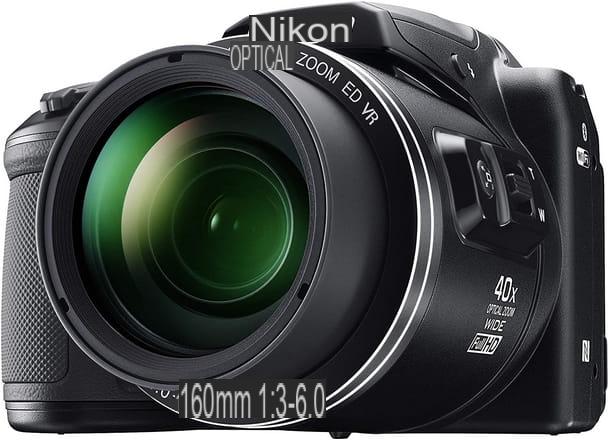
Another Super Zoom camera absolutely recommended for quality-price is the Nikon Coolpix B500. For characteristics and quality of the shots it has made its way into the hearts of first-time enthusiasts (and not only). The sensor is 16 megapixels with a lens capable of 40 × zoom stabilized with proprietary VR technology. This feature allows you to reduce the blur and micro-blur. The focal length from 4,0 to 160 mm corresponds to the 35 mm format. All these features are also useful for recording videos in Full HD at 25 or 30 FPS. The display is 3-inch and can be rotated.
Best Cheap Mirrorless
If what you are looking for is a camera capable of results closer to professional ones, but that does not force you to carry different lenses and at the same time give you versatility on different occasions, then let me recommend the best cheap Mirrorless.
Olympus E-M10 Mark II

This compact Mirrorless with a retro touch design has all the credentials to be one of the best in the category in consideration of the price. The strong point of the Olympus E-M10 Mark II is the five-axis stabilization, while the sensor is a Micro Four Thirds with a maximum resolution of 16 Megapixels. The lens included with the camera is a 14-42mm and the viewfinder is OLED, which is also very useful for video recording in 4K at 60 FPS with support for time-lapse recording. Wi-Fi support for transferring content with smartphones, tablets and other devices is very useful. Several functions integrated with the use of the OI.Share app.
Vedi offers your AmazonPanasonic Lumix DMC-GX80

La Mirrorless Panasonic Lumix DMC-GX80 it's another quality camera for those who keep an eye on the price. The sensor is 16 Megapixel with 12-32 mm MOS lens, there is the Dual IS stabilizer, focal distance 24 mm and there is no lack of good features also for video recording. In fact, the maximum resolution supported by the video recording function is 4K at 30 FPS and is assisted by the three-inch display and the hybrid Live View Finder. Support for Wi-Fi for data transfer to smartphones and tablets is also appreciated.
Vedi offers your AmazonSony Alpha 6000L

One of the most popular Mirrorless for value for money is the Sony Alpha 6000L, a camera that despite the price (for a Mirrorless) misses very little in terms of features. The sensor is 24,3 megapixels with a sensitivity of 25.600 ISO, also the type is the performing APS Exmor HD. The lens is interchangeable of course, but the integrated one is 16-50mm and adapts to the most common situations. The video sector is also doing well with support up to 1080p at 60 FPS, while the recovery is assisted by the OLED viewfinder and the partially tilting three-inch display. For connectivity, support for Wi-Fi and NFC technology is certainly helpful, ideal for transferring photos and videos with a touch, for example with a smartphone. Sony's Bionz X sensor does a great job in rendering images, however for zoom and stabilizer it is recommended to mount other lenses.
Vedi offers your AmazonPanasonic LUMIX G DC-GX800
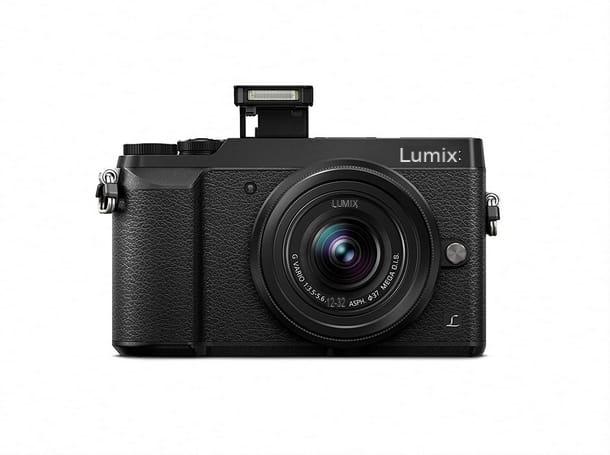
Compact and Mirrorless, the Panasonic LUMIX G DC-GX800 it could go unnoticed and instead deserves all the attention of those looking for an economic solution without sacrificing too much the quality of the shots. The 16 Megapixel sensor (micro 4/3 size) with MOS lens. The focal distance is 12mm, while video recording supports up to 4K resolution at 30 FPS. The camera is also practical to use thanks to the integrated touch screen with autofocus on the point touched on the display (just like with smartphones and tablets). File transfer is made practical by full Wi-Fi support.
Vedi offers your AmazonBest economic SLRs
In this last chapter I would like to give you some buying advice on best budget SLRs. Not a small choice, given that the market for this type of camera is mainly geared towards satisfying the needs of professionals and the so-called “prosumers”. However, I believe there are some extremely recommendable models even if you are looking into amateur photography for the first time and even if you want more from your photographic experience. So here are my buying suggestions.
Nikon D3500

La Nikon D3500 it is a Reflex that has made its way into the hearts of many enthusiasts, albeit novices. It is one of the most popular models for its versatility and for the equipment of all respect when compared to even the most expensive competitors. Among the strong points of this camera, the 24,2 Megapixel sensor, with ISO sensitivity up to 25.600 (native mode), numerous shooting modes including an automatic well capable of adapting to different lighting conditions. The lens is an AF-P 18 / 55VR Nikkor. Video recording supports Full HD (1080p) up to 60 FPS. The display is three inches, it is fixed and non-touch, while the connectivity side is entrusted only to Bluetooth supported by the SnapBridge software.
Vedi offers your AmazonCanon EOS 4000D

Another reflex camera particularly appreciated for the quality-price ratio is the Canon EOS 4000D. The sensor is 18 Megapixel and the lens kit can vary according to the needs, although what I suggest is the 16-55 mm, suitable for almost any situation for quality results. The optical sensor is APS CMOS, while the supported ISO sensitivity is 6.400 (expandable up to 12.800). This camera also records Full HD (1080p) video at 30 FPS, playable from the 2,7-inch screen. The connectivity side supports Wi-Fi connection to exchange photos and videos with other devices.
Vedi offers your AmazonCanon EOS 2000D

La Canon EOS 2000D is equipped with a 24,1 megapixel sensor capable of excellent results even with the 16-55 mm lens. Although it is a basic model proposed by Canon, it tries not to miss anything: it supports a maximum ISO sensitivity of 6.400 (expandable to 12.800), records video in Full HD at 30 FPS and connectivity is entrusted to the fast Wi-Fi signal, or to NFC technology. The screen is three inches and the sensor focus supports up to nine manually or automatically selectable points.
Vedi offers your AmazonCanon EOS 250D

A Reflex camera that knows how to be respected for features and price is certainly there Canon EOS 250D with 18-55mm lens. The sensor is a 24 Megapixel APS-C, combined with a performing DIGIC 8 processor. Of particular value is also the low weight for the category, but they do not disfigure at all compared to the more expensive models even the adjustable three-inch touch screen and the ability to record videos in 4K at 30 FPS (or Full HD at 60 FPS). The camera also supports Wi-Fi and Bluetooth connection, plus the camera has built-in Creative Assistant function to support you in applying filters and using various effects.
Vedi offers your Amazon Best Budget Cameras: Buying Guide






